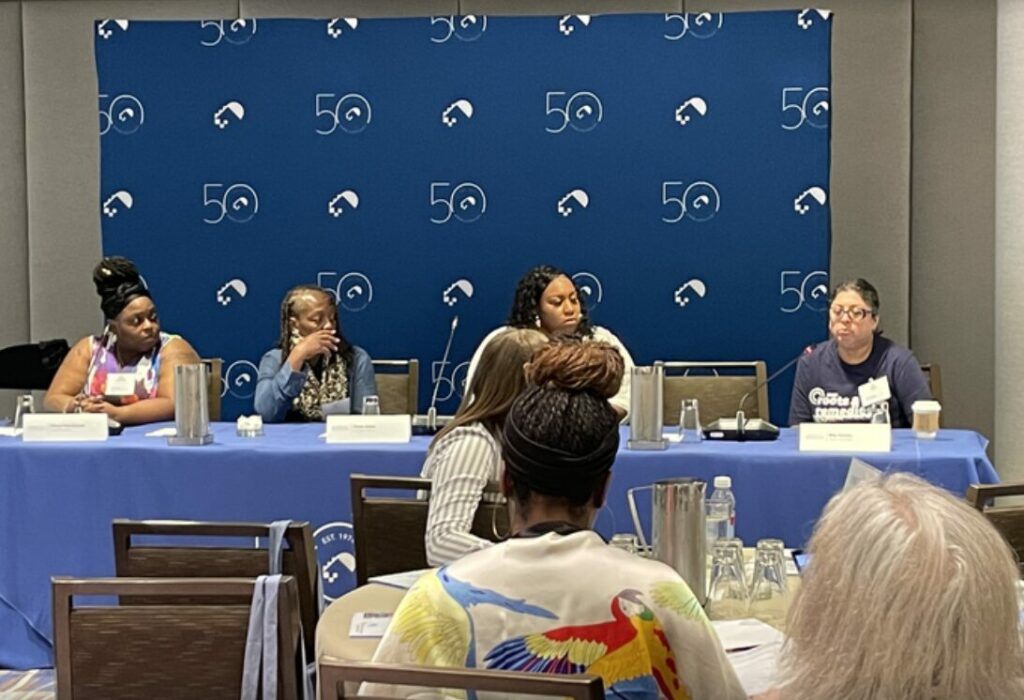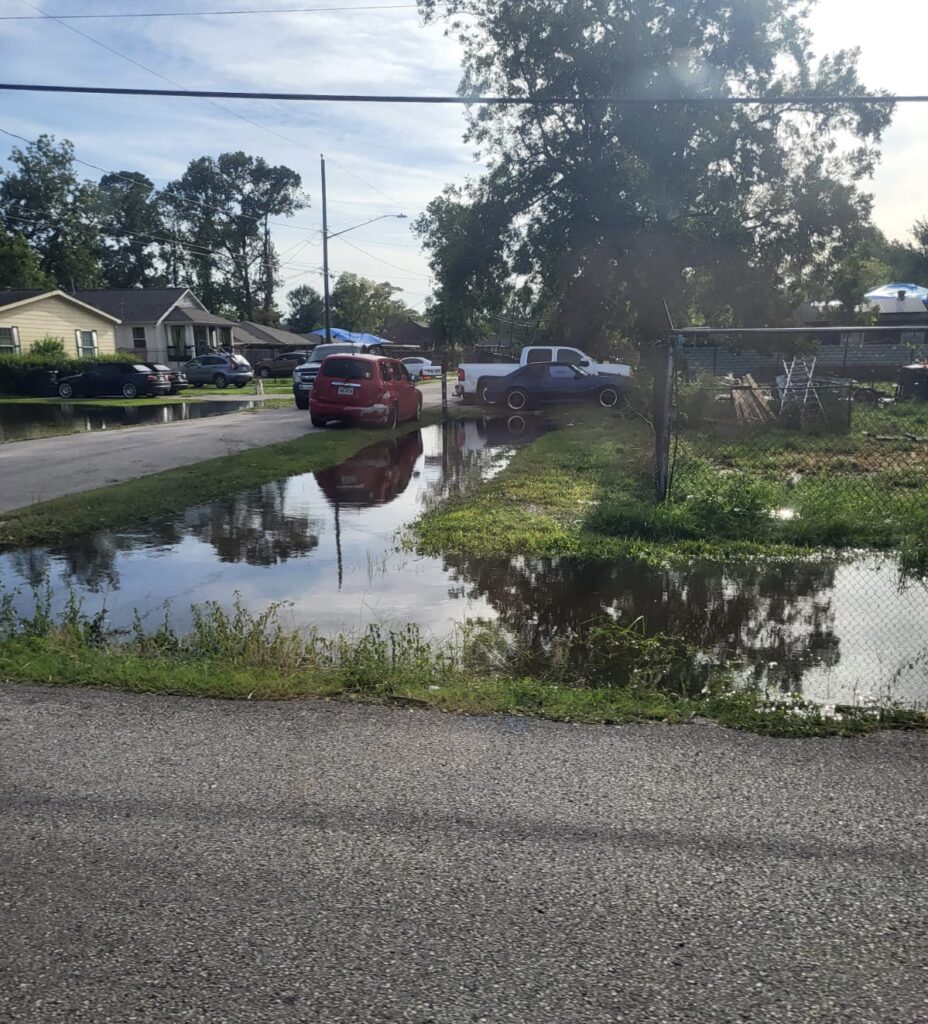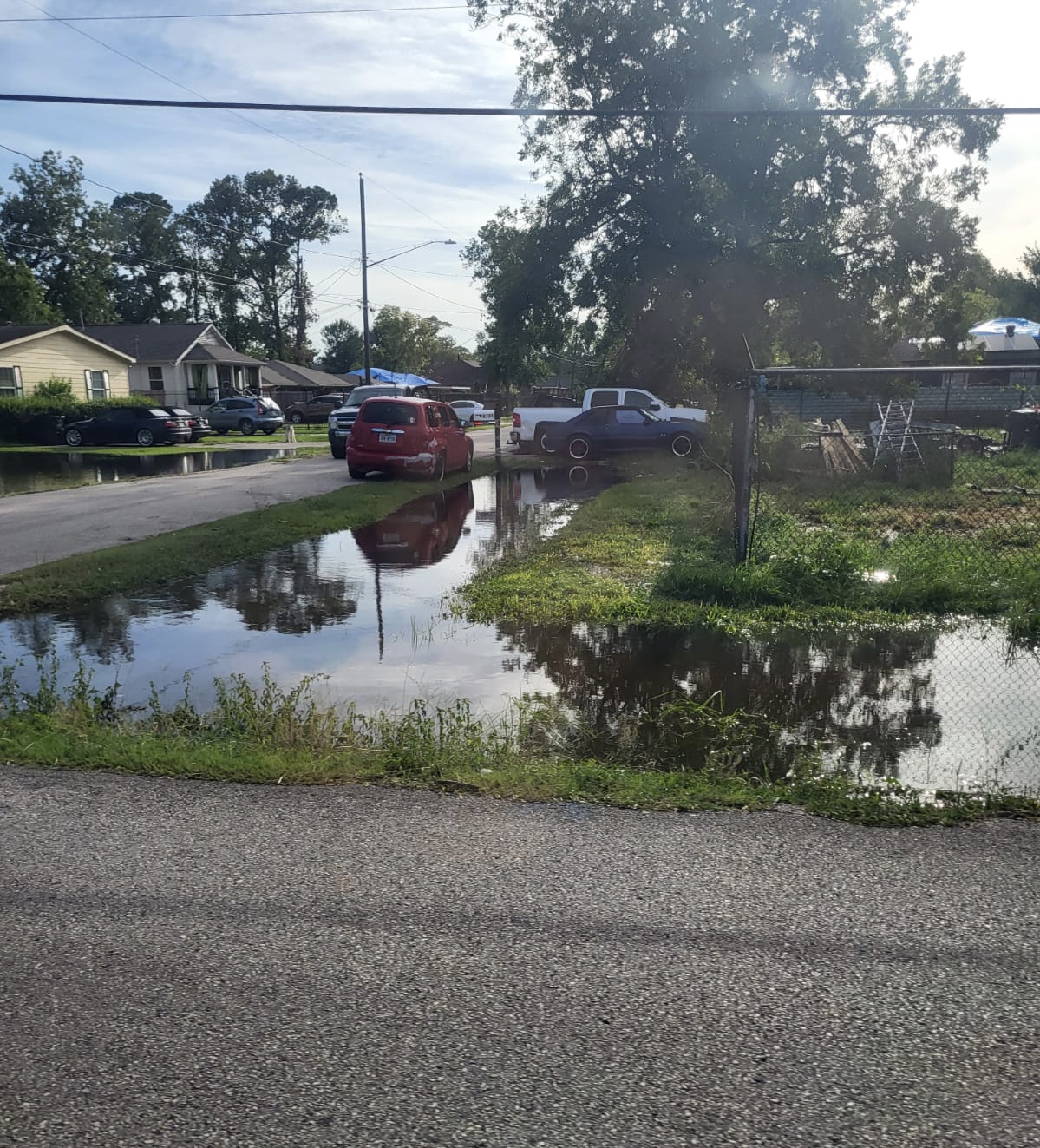Northeast Houston residents are not just confronting Hurricane Beryl’s aftermath; they’re forging a path to resilience and environmental justice through community-driven solutions.
On Monday July 8, tropical Storm Beryl made its landfall as a Category 1 hurricane in Texas, producing flash flooding and tornadoes. In addition, 2.5million lost power and at least 7 people died. Three weeks before Beryl, advocates from the Northeast Action Collective (NAC) and West Street Recovery (WSR) in Texas were presenting at the National Low Income Housing Coalition’s Disaster Recovery Convening. They explained the deep interconnections between environmental justice and disaster impacts and their collective efforts towards a just recovery.

The Intersection of Environmental Injustice and Climate Disasters
Mrs. Rita Robles, one of those advocates, lives in a vibrant intergenerational, interracial, and bilingual community where many neighbors have mixed immigration statuses. Her community has been fighting against the disproportionate placement of polluting facilities and lack of clean air. Many of her neighbors suffer from unexplained illnesses, cancer, and high asthma rates; Mrs. Rita herself has asthma. To combat the lack of access to affordable and healthy produce, Mrs. Rita and her neighbors had traditionally created community gardens and used their backyards to grow vegetables.
However, when Hurricane Harvey hit in 2017, it not only flooded and damaged many of her neighbors’ homes, but it also flooded their backyards. The flood waters were contaminated with sewage water from failed/flooded septic tanks and chemically polluted water from surrounding toxic facilities. The toxic water remained stagnant for weeks in their backyards, rendering the soil unfit for growing vegetables and compounding existing environmental injustice.
Hurricane Harvey was not just an event that happened to make existing environmental injustice issues worse, it was an event created by these existing inequities. Aka, not a natural disaster. While city and county resources have been allocated to update and maintain modern stormwater infrastructure for more affluent communities, these resources have been pulled out of Northeast Houston. Forcing low-income residents with limited physical equipment to maintain failing and inefficient open ditches. Northeast Houston has also not been prioritized for central sewage water treatment. Instead, each household is relying on septic tanks, which are susceptible to overflowing under heavy rainfall and contaminating flood waters with sewage.

Community-Driven Response and Recovery from Hurricane Harvey to Beryl
Because of systemic disinvestment in low-income communities, climate disaster impacts are worst in environmental justice communities. An EPA analysis showed that Black and Latine populations are projected to experience higher impacts from climate change.
- Black American individuals are projected to face higher impacts of climate change including flooding, extreme heat and air pollution, compared to all other demographic groups. For example, Black individuals are currently 34% more likely to live in areas with the highest projected increases in childhood asthma diagnosis, which increases to 41% under a 4°C (7.2°F) increase of global warming.
- Latine have high participation in weather-exposed industries, such as construction and agriculture, which are especially vulnerable to the effects of extreme temperatures. With 2°C (3.6°F) of global warming, Latine individuals are 43% more likely to currently live in areas with the highest projected reductions in labor hours due to extreme temperatures.
The EPA analysis also projected Black communities to have higher proportions of inland flooding from climate change. In fact, three weeks after presenting the national convening, the NAC and WSR advocates were impacted by Hurricane Beryl which brought more flooding to their community. As a horizontally-structured grassroots organization, WSR is on the ground responding to community needs.
They are distributing portable, solar-rechargeable kilowatt-hour batteries to residents without power. This initiative ensures that families can maintain essential functions during outages. They are also giving out cash assistance to families that lost food or have had income disruption as a result of the disaster. In addition, the two organizations are tarping roofs, and taking out flood waters that came in from broken rooms and overflowing bayous and streams. They continue to build community resilience by developing their hub house system which places critical disaster resources in neighborhoods most likely to be impacted by climate disasters. The hubs are led by community members who coordinate the distribution of supplies and who advocate for changes in the greater disaster recovery system so that future disasters are less catastrophic.
Supporting environmental justice organizations in disaster response
As NAC and WSR continue to create a path towards just recovery, consider contributing to their grassroots and impactful work here. As a horizontal and community-based organization, many of the staff are serving and helping community members as they are also going through the impact themselves with their families and homes. Through building relationships and making space for community healing, this community aims to develop the capacity to drive community-based solutions that address existing inequities.
